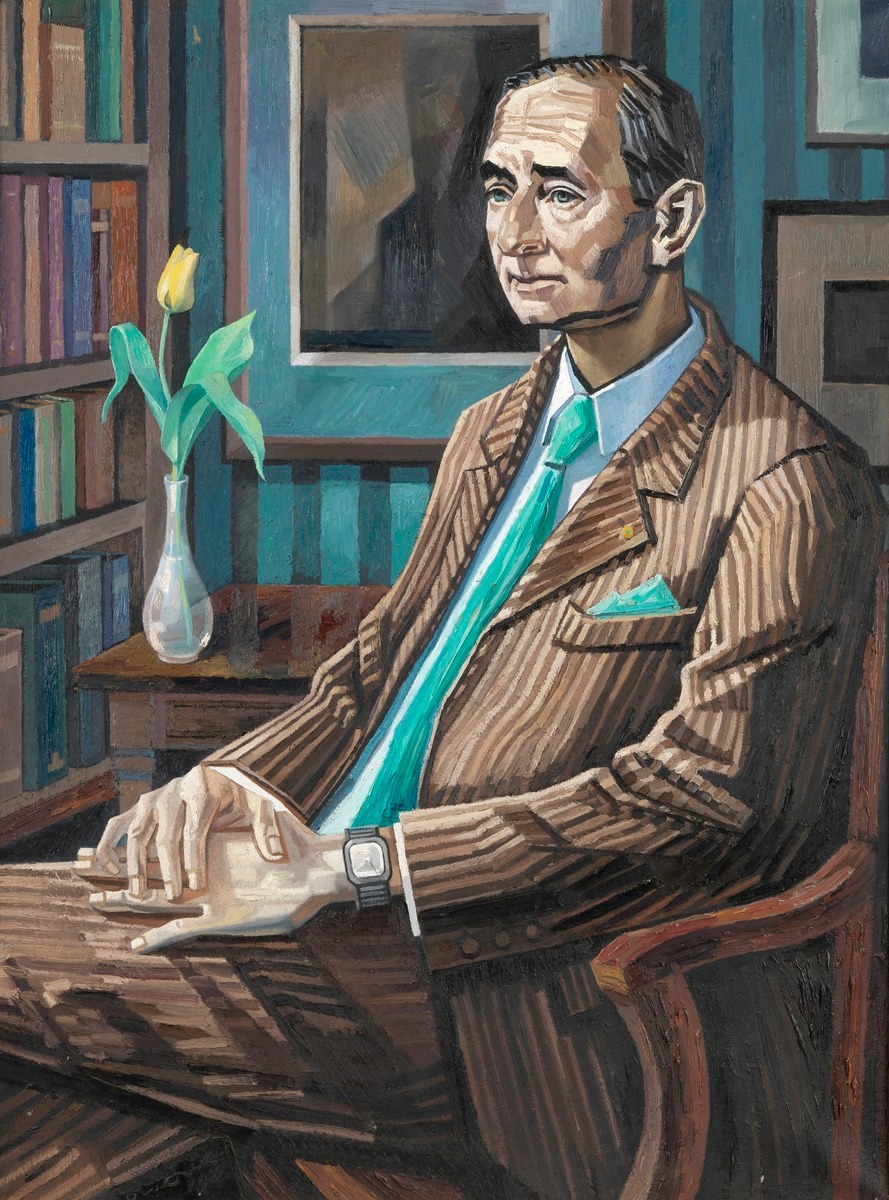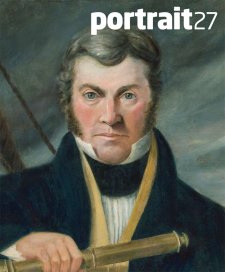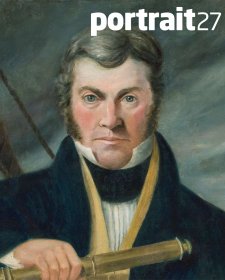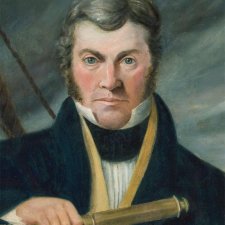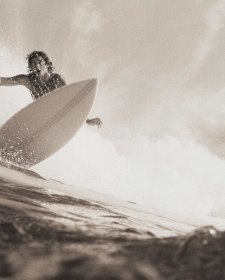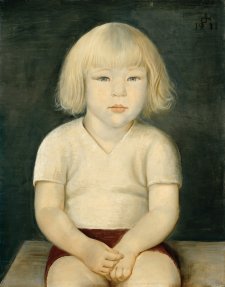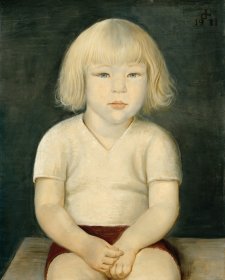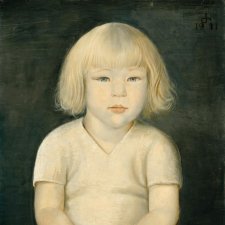His career has spanned five decades and encompassed clinical and teaching appointments in Australia and the United Kingdom at institutions such as Cromwell and Hammersmith Hospitals in London, Oxford University, Melbourne’s St Vincent’s Hospital, and the University of Melbourne.
It was during his time at the Royal College of Surgeons and Hammersmith Hospital in London in the late 1980s that Henry Crock sat for this portrait by British artist David Smith. Smith (1920–1999) is known for his landscape art, and his career included a commission from maritime authority Trinity House to paint the lighthouses of England and Wales in the 1980s, and two stints as official artist to the British Antarctic Survey during the 1970s – a role which prompted Lord Shackleton to describe him as the twentieth century’s finest recorder of the frozen continent. Henry Crock came to know Smith and his work through artist Tate Adams, an Irish-born print maker and publisher who has worked in Australiasince the 1950s. After meeting at an exhibition of Smith’s paintings in London in 1986, Crock and Smith became close friends, with the artist offering to paint this portrait in 1988 – one of three of Crock which he made.
Reflecting the close friendship between artist and subject, Smith’s portrait of Henry Crock demonstrates the modern intention of portraiture to convey an insight into the private side of an eminent individual rather than an emphasis on his public achievements. This is a quality found in a number of other paintings of prominent Australian doctors held in the National Portrait Gallery’s collection, such as Rick Amor’s 2002 painting of Nobel laureate Peter Doherty, or Kerrie Lester’s informal portrait of ophthalmologist Fred Hollows, painted in 1993. Apart from the particular attention paid to Crock’s hands, clues which would ordinarily signify his profession – scientific equipment, a hospital setting, a lab coat or stethoscope, perhaps – are absent. Nor are there typical symbols of ‘eminence’. Instead, the work focuses on the personality of the subject, creating a strong sense of a contemplative, learned and caring man whose career has been dedicated to healing. Painted in the artist’s home in north London, the workalso alludes to Crock’s longstanding love of the visual arts, and his friendships and professional relationships with artists. One of the artworks depicted in the background is a woodcut by Tate Adams in Smith’s own collection. Crock’s private collection includes a number of landscape works by David Smith.
Specialising in the treatment of patients with disc disorders, much of Henry Crock’s work has involved the investigation of the vascular system of the skeleton and the spinal cord in particular, and its role in back pain and sciatica. His research has led to the improvement of surgical techniques and his many books on surgery and anatomy have become required reading for surgeons in training. Among many other honours, Henry Crock was made an Officer of the Order of Australia in 1984 for his services to medicine, particularly as an orthopaedic surgeon. Now retired and living in Melbourne, Dr Crock continues to contribute to his field through involvement in organisations that work towards improved understanding and treatment of spinal disorders. Henry Crock has donated his portrait to the National Portrait Gallery in memory of his close friend, the artist, who died suddenly in 1999.
